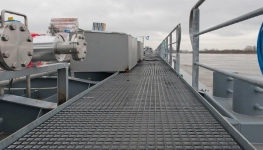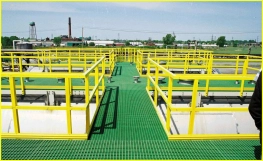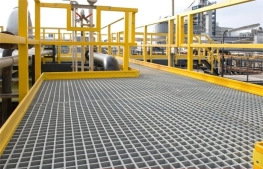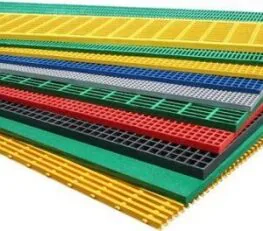8 Innovations in Composite Grating Floor Technology Transforming Industries
When it comes to industrial flooring solutions, the composite grating floor stands out as an innovative choice that combines strength, versatility, and elegance. Designed to meet the rigorous demands of various environments—ranging from manufacturing plants to outdoor walkways—the composite grating floor presents a modern approach to traditional flooring challenges. Its robust construction ensures longevity, safety, and low maintenance, making it a perfect investment for business owners and engineers seeking durability without compromising aesthetic appeal.
This article explores the multifaceted advantages of the composite grating floor, delving into its manufacturing, applications, and the future potential it holds for infrastructural development worldwide.
The Evolution of Flooring – Why Composite Grating Floor is a Game Changer
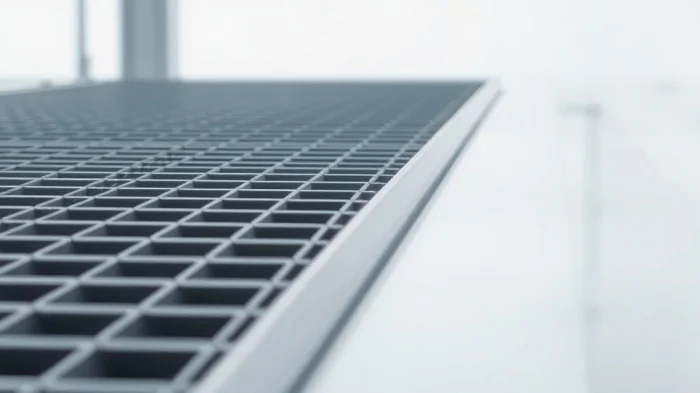
Traditional flooring materials like steel, concrete, or wood have served industries well for decades. However, each has limitations—corrosion, wear and tear, or high maintenance costs—that can hinder operational efficiency. The composite grating floor emerged as a revolutionary alternative, integrating advanced composite materials that are resistant to corrosion, impact, and environmental factors.
What sets the composite grating floor apart is its thoughtful design that emphasizes both functionality and safety. Its open-grid structure allows for efficient drainage and air circulation, reducing slip hazards and puddling. Moreover, these floors are lightweight yet remarkably strong, facilitating easier installation and reducing foundational load requirements. As industries increasingly prioritize sustainability, composite materials' eco-friendly properties further contribute to the appeal of this flooring option.
Manufacturing and Material Science Behind Composite Grating Floors
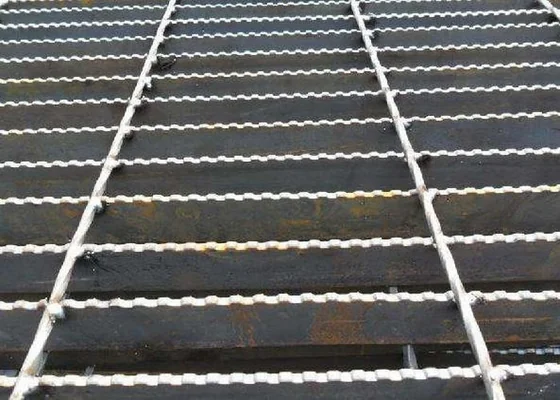
At the heart of the composite grating floor is an intricate manufacturing process that blends modern material science with precision engineering. Typically, these gratings are made of fiber-reinforced plastics, such as fiberglass, combined with resin matrices that provide added strength and durability. The process involves molding or pultrusion, ensuring uniformity and high structural integrity across the entire panel.
The strength-to-weight ratio of composite gratings outperforms traditional steel or aluminum options, primarily because of optimized fiber orientation and resin impregnation. This results in a material that can withstand heavy loads, resist corrosion, and endure environmental extremes—including saltwater exposure and UV radiation—without degradation. Such advancements mean that composite grating floors can be used in coastal areas, offshore platforms, and underground facilities where durability is critical.
Diverse Applications and Customization Opportunities for Composite Grating Floors
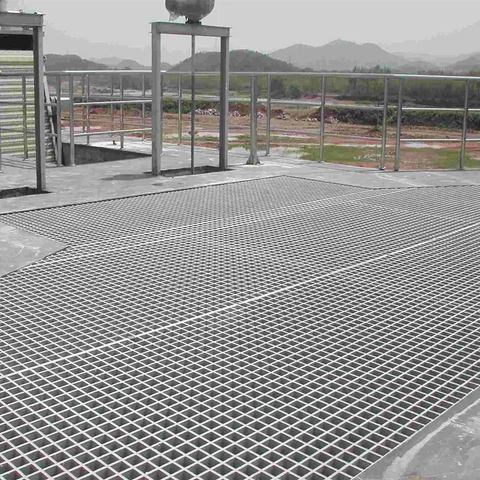
The versatility of the composite grating floor makes it suitable across a diverse array of sectors. In industrial environments, they serve as walkways, platforms, and flooring in chemical plants, since their corrosion resistance minimizes maintenance costs and enhances safety. Additionally, in outdoor settings—like bridges, walkways, or sports stadiums—they offer a durable, slip-resistant surface that's able to withstand weather variations.
Another compelling aspect is the customization potential. Manufacturers can tailor the dimensions, load-bearing capacity, and surface textures of composite gratings to suit specific project needs. For example, slip-resistant coatings or antibacterial surfaces can be applied, enhancing safety and hygiene. These adaptable features are instrumental in sectors like food processing or healthcare where hygiene and safety standards are paramount.
The Future of Composite Grating Floor Technology and Sustainability
As we look ahead, the trajectory of composite grating floor technology points towards greater innovation and sustainability. The ongoing development of biodegradable composites and recycled fiber materials could further elevate their eco-friendliness. Additionally, advancements in smart materials—integrating sensors into composite gratings—may enable real-time monitoring of structural health, environmental exposure, and load stress.
Furthermore, the global push for sustainable infrastructure will likely boost the adoption of composite gratings, especially given their lightweight nature, facilitating transport, installation, and overall lifecycle management. The integration of design aesthetics with structural benefits could also lead to more architecturally prominent applications, blending functionality with visual appeal.
Conclusion
The composite grating floor represents a significant leap forward in modern flooring technology, offering unmatched durability, safety, and versatility across multiple industries. By leveraging innovative materials and manufacturing techniques, it provides solutions that are not only long-lasting and low-maintenance but also environmentally friendly and adaptable to varying specifications. As technology evolves, expect the composite grating floor to become even more integral in sustainable and resilient infrastructure development, driving efficiency and safety in industrial and public spaces alike.
When it comes to industrial flooring solutions, the composite grating floor stands out as an innovative choice that combines strength, versatility, and elegance. Designed to meet the rigorous demands of various environments—ranging from manufacturing plants to outdoor walkways—the composite grating floor presents a modern approach to traditional flooring challenges. Its robust construction ensures longevity, safety, and low maintenance, making it a perfect investment for business owners and engineers seeking durability without compromising aesthetic appeal.
This article explores the multifaceted advantages of the composite grating floor, delving into its manufacturing, applications, and the future potential it holds for infrastructural development worldwide.
The Evolution of Flooring – Why Composite Grating Floor is a Game Changer
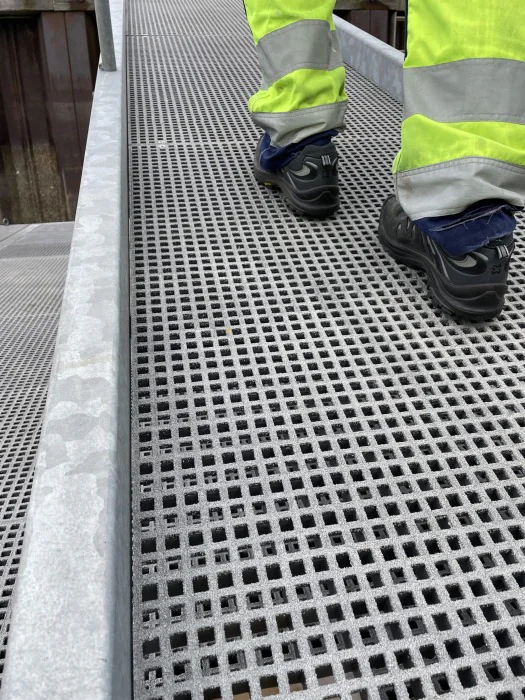
Traditional flooring materials like steel, concrete, or wood have served industries well for decades. However, each has limitations—corrosion, wear and tear, or high maintenance costs—that can hinder operational efficiency. The composite grating floor emerged as a revolutionary alternative, integrating advanced composite materials that are resistant to corrosion, impact, and environmental factors.
What sets the composite grating floor apart is its thoughtful design that emphasizes both functionality and safety. Its open-grid structure allows for efficient drainage and air circulation, reducing slip hazards and puddling. Moreover, these floors are lightweight yet remarkably strong, facilitating easier installation and reducing foundational load requirements. As industries increasingly prioritize sustainability, composite materials' eco-friendly properties further contribute to the appeal of this flooring option.
Manufacturing and Material Science Behind Composite Grating Floors

At the heart of the composite grating floor is an intricate manufacturing process that blends modern material science with precision engineering. Typically, these gratings are made of fiber-reinforced plastics, such as fiberglass, combined with resin matrices that provide added strength and durability. The process involves molding or pultrusion, ensuring uniformity and high structural integrity across the entire panel.
The strength-to-weight ratio of composite gratings outperforms traditional steel or aluminum options, primarily because of optimized fiber orientation and resin impregnation. This results in a material that can withstand heavy loads, resist corrosion, and endure environmental extremes—including saltwater exposure and UV radiation—without degradation. Such advancements mean that composite grating floors can be used in coastal areas, offshore platforms, and underground facilities where durability is critical.
Diverse Applications and Customization Opportunities for Composite Grating Floors

The versatility of the composite grating floor makes it suitable across a diverse array of sectors. In industrial environments, they serve as walkways, platforms, and flooring in chemical plants, since their corrosion resistance minimizes maintenance costs and enhances safety. Additionally, in outdoor settings—like bridges, walkways, or sports stadiums—they offer a durable, slip-resistant surface that's able to withstand weather variations.
Another compelling aspect is the customization potential. Manufacturers can tailor the dimensions, load-bearing capacity, and surface textures of composite gratings to suit specific project needs. For example, slip-resistant coatings or antibacterial surfaces can be applied, enhancing safety and hygiene. These adaptable features are instrumental in sectors like food processing or healthcare where hygiene and safety standards are paramount.
The Future of Composite Grating Floor Technology and Sustainability
As we look ahead, the trajectory of composite grating floor technology points towards greater innovation and sustainability. The ongoing development of biodegradable composites and recycled fiber materials could further elevate their eco-friendliness. Additionally, advancements in smart materials—integrating sensors into composite gratings—may enable real-time monitoring of structural health, environmental exposure, and load stress.
Furthermore, the global push for sustainable infrastructure will likely boost the adoption of composite gratings, especially given their lightweight nature, facilitating transport, installation, and overall lifecycle management. The integration of design aesthetics with structural benefits could also lead to more architecturally prominent applications, blending functionality with visual appeal.
Conclusion
The composite grating floor represents a significant leap forward in modern flooring technology, offering unmatched durability, safety, and versatility across multiple industries. By leveraging innovative materials and manufacturing techniques, it provides solutions that are not only long-lasting and low-maintenance but also environmentally friendly and adaptable to varying specifications. As technology evolves, expect the composite grating floor to become even more integral in sustainable and resilient infrastructure development, driving efficiency and safety in industrial and public spaces alike.
Embracing Growth with Composite Grating Innovation
Looking further into the potential of composite grating floors, one cannot overlook the impact of digitalization on enhancing functionality and performance. Innovations such as artificial intelligence and machine learning can optimize design processes and predict material performance under various loads and environmental conditions. This data-driven approach equips engineers and architects with the necessary insights to create more durable and safer flooring solutions tailored specifically to their projects.
Moreover, the increasing awareness of environmental impacts urges industries to transition towards materials that offer sustainability without losing performance reliability. The versatility of composite grating floors combined with intelligent technology aligns with this trend, paving the path for future advancements. In a world where safety, efficiency, and sustainability are paramount, embracing the innovations presented by composite grating floor technology will undoubtedly shape the future landscape of industrial flooring solutions.
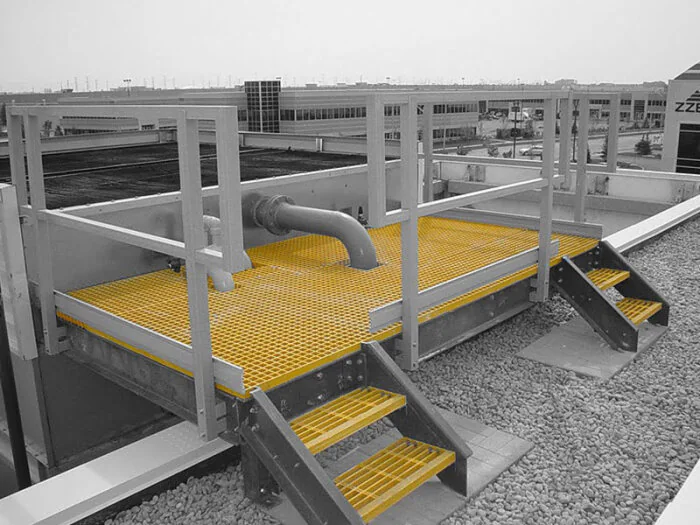
Innovations in Durability and Safety
The evolution of materials used in composite grating floors has resulted in significant advancements that enhance their durability and safety features. One important innovation is the integration of anti-slip surfaces, which plays a crucial role in protecting workers in high-traffic industrial settings and outdoor environments susceptible to moisture. This feature not only promotes workplace safety but also reduces accidents, which could lead to costly liabilities for businesses. Furthermore, the sturdy construction of composite gratings can absorb shock and impact, providing a safer surface for workplace activities and minimizing the risks associated with heavy machinery operation.
Safety goes hand in hand with regulatory standards, and as industries grow more aware of compliance requirements, adopting composite grating floors can facilitate adherence to safety codes. With their inherent characteristics, these floors ensure that businesses not only meet mandatory safety standards but exceed them, leading to a competitive edge in industries where safety is paramount. The commitment to proactive safety measures resonates well with the rising consciousness surrounding corporate social responsibility, prompting companies to prioritize the well-being of their employees and the environment.
Future Innovations Through Sustainable Practices
As the demand for sustainable practices escalates, the future of the composite grating floor shows promising shifts towards using renewable resources and environmentally friendly materials. Innovations in biocomposites and recycled plastics provide new avenues for manufacturers aiming to reduce their carbon footprints while producing high-performance flooring options. Forward-thinking companies are exploring ways to incorporate these materials into their manufacturing processes, harmonizing sustainability with functionality.
Moreover, combining these sustainable materials with cutting-edge technology, manufacturers may soon unveil composite grating floors embedded with smart sensors that monitor usage patterns, detect wear and tear, or even alert authorities to structural weaknesses. Such capabilities lead not only to enhanced operational efficiency but also prolong the lifecycle of the flooring, further justifying the initial investment. As industries become more reliant on data-driven decisions, the trajectory of composite grating floor technology appears ever more intertwined with the aspiration to foster a greener, smarter future.
Conclusion
The journey of the composite grating floor illustrates a profound transformation in flooring technology, merging durability, safety, and environmental consciousness into an outstanding flooring solution. With their advanced engineering, these floors are not only designed to withstand the rigors of demanding industrial environments but are also evolving alongside technological advancements and sustainability practices. As we move towards a future of smart, eco-friendly infrastructure, the transformative potential of composite grating floors promises to redefine not only the spaces we occupy but also the very standards by which we measure safety, efficiency, and environmental responsibility. Embracing these innovations will be key for industries aiming to thrive in a rapidly changing landscape.
The Role of

in Industrial Applications
In various industrial sectors, composite grating floors have emerged as invaluable assets due to their unique blend of strength and adaptability. Their lightweight properties make them easier and more cost-effective to transport and install, a vital factor for operations that require rapid setup and flexibility. Industries such as petrochemicals, pharmaceuticals, and food processing have embraced these floors not just for functionality but also for compliance with stringent health regulations. Given their ability to endure harsh chemicals and manage various environmental conditions, composite grating floors present a solution that promotes higher efficiency without compromising safety or hygiene.
Moreover, the customizability of composite grating floors allows for innovation in design and performance. Manufacturers are increasingly tailoring grating to meet specific operating conditions, whether it be for heavy machinery settings or wet environments prone to slips. Beyond mere practicality, the aesthetic aspect of these floors cannot be overlooked. With advances in design technology, various colors, patterns, and finishes can be integrated seamlessly into the functionality of composite grating. This opens avenues for architects and designers to incorporate functional flooring solutions into a harmonious environmental design, thereby enhancing overall project viability while ensuring safety and performance.
Advancements in Smart Technology Integration
As technology races forward, the integration of smart technology into composite grating floors presents a fascinating frontier that marries innovation with practicality. Manufacturers are increasingly developing systems that incorporate sensors and IoT (Internet of Things) capabilities that can monitor the condition of the floors in real-time. This smart technology not only allows for proactive maintenance but also enhances safety protocols. For instance, embedded sensors can detect load stress or hazardous conditions, alerting operators before potential failures occur. Such advancements ultimately lead to reduced downtime and higher operational safety standards, transforming how facilities manage such infrastructure.
This confluence of smart materials and composite technology dovetails beautifully with the evolving needs of today’s industries to embrace data-driven decision-making processes. As companies prioritize not only the physical safety of employees but also the longevity of their investments, smart composite grating floors could become indispensable essential tools. By leveraging advanced analytics and predictive capabilities, industries can significantly improve their operational efficiencies, thus contributing further to a sustainable future.

Conclusion
The advancements in composite grating floor technology capture the essence of innovation in industrial flooring—merging durability, aesthetic appeal, and smart integrations with a strong commitment to sustainability. The blend of lightweight characteristics and unmatched safety features ensures that these floors are equipped to handle the demands of diverse industries, from pharmaceuticals to hazardous environments, while also standing out architecturally. As we look to the future, the continued evolution of composite materials, integrated smart technologies, and eco-friendly practices promises to not only enhance operational performance but also drive a paradigm shift towards more resilient and responsible industrial infrastructures. The legacies of safety, efficiency, and sustainability will play pivotal roles in shaping the next generation of industrial applications and pave the way for a smarter, greener future in flooring solutions.https://hoabinh.com/composite-network-applications-flexibly
Dự án đã thực hiện khác
- Komposittgitter – Fremtiden for byggeindustrien
- Трендови во употребата на композитни решетки за подови во модерната градба
- Komposiittimateriaalien käyttö rannikkoalueiden rakennushankkeissa
- Miért fektetnek egyre több vállalkozás a kompozit anyagokba?
- Παγκόσμιες τάσεις της αγοράς για τα δάπεδα σύνθετων σχαρών
- Efterspørgslen efter kompositristegulve i Nordamerika og Europa
- Нови технологии при производството на FRP композитни решетъчни плочи




